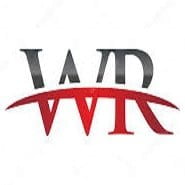-

-
Wikirise.com Advertise with Us HereStats: 4,783 members, 41,615 Posts
Number of Comments : 2,630
Date: Saturday, 23rd November 2024
Aftershock: Everest and the Nepal Earthquake (2022) Netflix Review – A gripping, shocking documentary
By Essang Michael - October 8, 2022 | Categories: Movies Tags: Foreign, Movie Reviews
Share this post:

Episode Guide
Wrong Place Wrong Time
No Way Out
Escape
Aftershock: Everest and the Nepal Earthquake is a gripping, absorbing and utterly shocking documentary, depicting the trials and tribulations during and following the Nepal Earthquake in 2015. Also knows as the Gorkha earthquake, this natural disaster killed nearly 9000 people and made 3.5 million more homeless. Entire villages were flattened; centuries-old buildings destroyed; and in Kathmandu, the place looks like a warzone.
Split across 3 episodes, Aftershock brings together survivors from this awful tragedy, giving their first-hand accounts of what happened whilst splitting the focus across three key areas in Nepal. The first follows a number of mountaineers up at Everest, in both Base Camp and Camp 1. Following the earthquake, they find themselves stuck in an impossible situation, and with bodies piling up and scarce resources at hand, all hope lies on rescue.
The second story takes place deep in Kathmandu. After the quake, rescue operations take place to try and find survivors buried under mountains of rubble, but it’s a race against time. As every second counts, will they find anyone alive?
The third and final story takes place in Langtang Valley, a remote part of the mountainous region where a group of survivors find themselves tangling with the locals, in a pressure-cooker situation that looks set to explode at any moment.
All three of these tales are interwoven around an animated map, which flies between the different areas whilst simultaneously showcasing the distance and area these people are spread out across. It’s a neat way of extrapolating how devastating this earthquake actually was, whilst simultaneously bringing in as many different perspectives and takes on what happened as possible.
There’s a lot of raw footage captured from the time, and the show splits its time between that footage, photos snapped by different survivors (most notably from a woman called Athena who tags along with the Israelis in the third story) and intermingled talking head interviews that allow us to get into the mindset of these men and women.
Aftershock’s musical score is also fantastic too and it’s something that’s going to fly under the radar for a lot of people talking about this one. There’s an absolutely devastating moment in episode 2 which sees the music work perfectly. Here, one of the Langtang Village residents mentions all the people he’s lost in this earthquake. The music slowly crescendos until it’s the same volume as his voice, giving gravity to the situation and the awful losses many experienced during this time.
The documentary never outstays its welcome either, although one could argue that the first episode – which clocks in at 38 minutes long – could have been a tad longer to show more raw footage from the earthquake, potentially with news reports to heighten the tension. It’s a minor point though in what’s otherwise a very good series.
Netflix know how to produce excellent documentaries and Aftershock: Everest and the Nepal Earthquake is no exception. This is another shocking nature documentary, and an absolute must-watch.